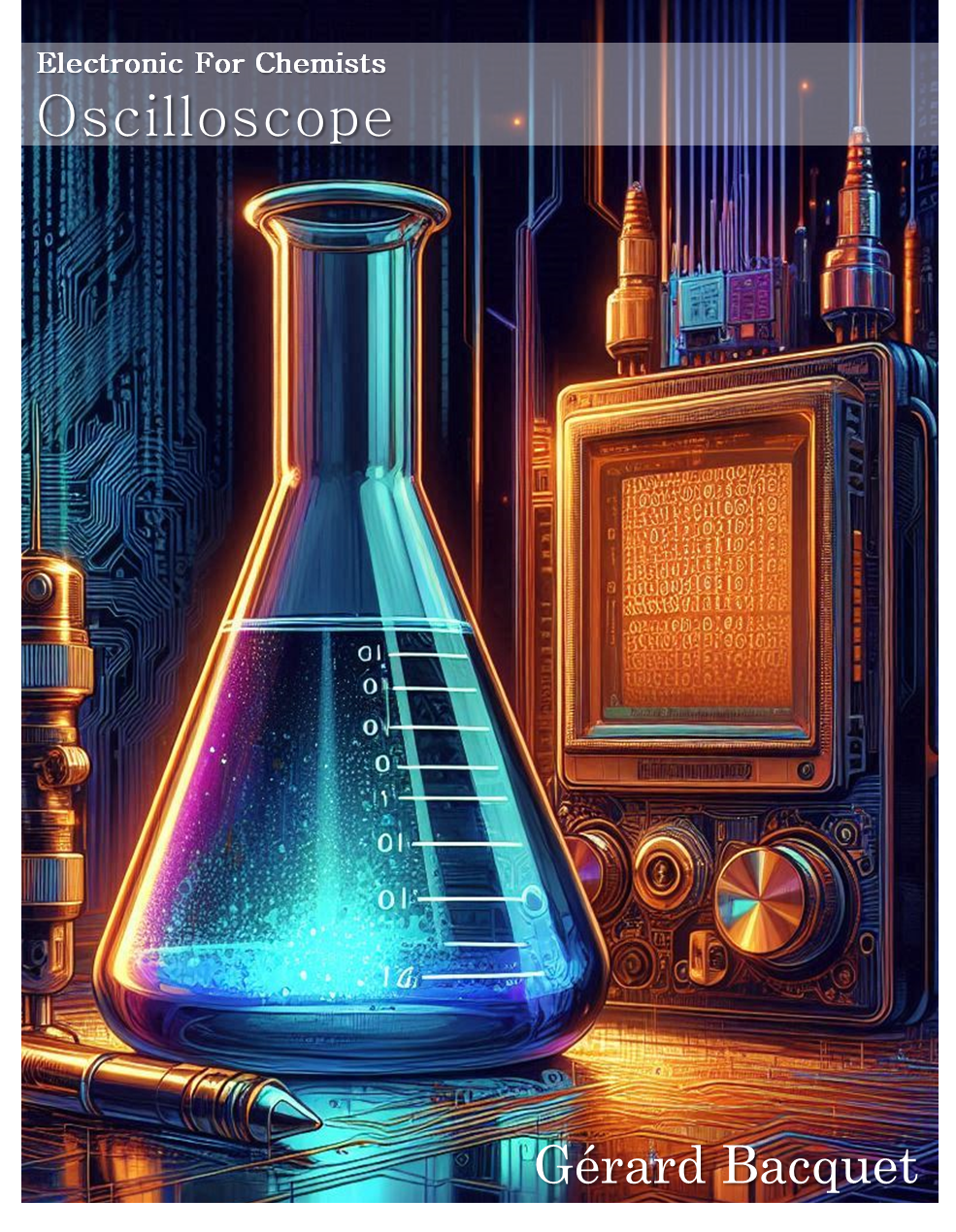
Electronic for Chemists_ The Oscilloscope
This book is part of in a series of publications aimed at introducing chemists and physicists to the design of laboratory equipment in order to create an autonomous and low-cost "ChemLab". Beyond the economic reason, the main purpose of this project is to serve as an educational support, to initiate a frugal approach to innovation (consumption of less energy or renewable energy sources) and finally to promote the reuse of obsolete components or objects.
In a number of different domains, there is a need to observe electric signals, generated or distorted by captors, in a variety of forms and at different intensities, across a wide range of frequencies, from a few hertz to over one thousand hertz. To fulfil these needs, this book shows you how to make an oscilloscope from an Arduino microprocessor. It will also show you more advanced ways to use these cards.
This book is then dedicated to the design of a mere oscilloscope to complete our electric lab.
From a pedagogical standpoint, The book teaches the basics of Arduino, including key functions like interrupts, pin registers and port actions, the INPUT-PULLUP approach, the utilisation of the digital to string function “dtostrf()” and managing Arduino frequencies …
Let's not forget that we cannot expect a chemist to become an expert in electronics and data processing ... However, we can educate him or her in the simple and basic principles. We invite chemists to participate in the open source movements to enrich himself and the community of "hackers" and "doers". In this sense, this book has been written in the hope that readers will fill in the missing pages!

